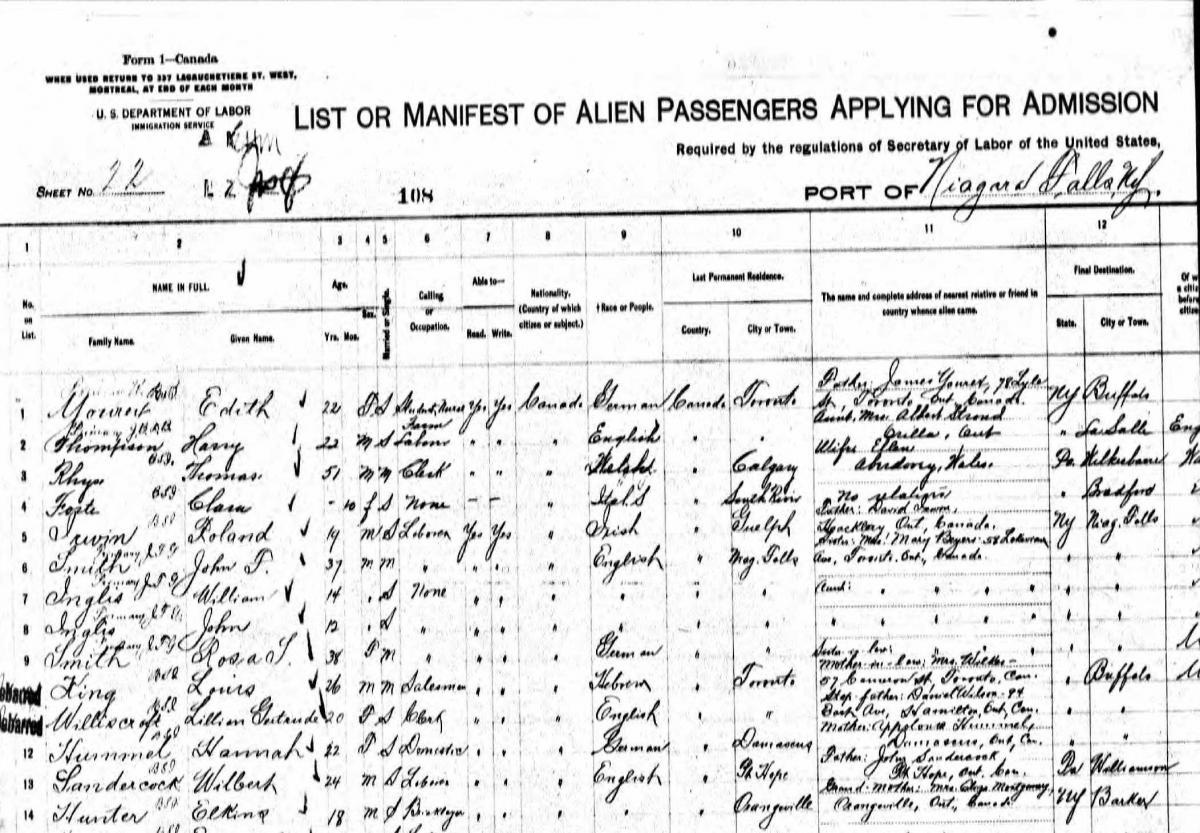Eh Cumpari! Ce vò sunà na nova canzune?
And the journey of 730 steps (perhaps more) began today.
Today, my wife and I had our first meeting with PortaleItaly. It’s the latest step in what has been a months-long search for the right people to help me navigate a process that is equal parts legal maze and bureaucratic endurance test.
Since returning from Italy in October, I’ve spoken with multiple organizations that claim to assist with jure sanguinis citizenship claims. Most of them either didn’t follow up, didn’t seem reputable, or simply vanished after an initial conversation. Many weren’t even based in the U.S., making accountability feel even more tenuous.
This is a tricky business. What I’m attempting isn’t just a routine paperwork shuffle—it’s a specialized legal and historical investigation with two major components:
Part One: Determine whether (and how) jure sanguinis applies in my case. This means gathering certified records from both the U.S. and Italian governments, ensuring every document is properly authenticated for legal scrutiny.
Part Two: If eligibility is confirmed, petition for citizenship before the Italian courts. This isn’t just filling out forms at a consulate; it’s an administrative legal process, requiring expertise in maneuvering through a foreign legal system.
I’ve heard the horror stories—people stuck in this process for years, spinning their wheels with little to show for it. I have no interest in that outcome. Just as people pay me for my expertise, I understand that success here may require paying for the right professionals—people who know how to navigate bureaucratic and legal obstacles with precision.
So be it.
Today marks the start. I paid PortaleItaly to begin the first phase: a deep dive into my ancestry to determine if my distant (possibly very distant) Italian ancestor was an Italian citizen at the time of my direct ancestor’s birth. From there, we’ll see where the evidence leads.
And so, the journey begins.
Chances are, you might have a claim to a European citizenship as well. In my case its Italian citizenship. Let me explain how and why.
How Jure Sanguinis Works: The Italian Bloodline Citizenship Rule
At its core, jure sanguinis (Latin for "right of blood") is a principle of nationality law that grants citizenship based on ancestry rather than place of birth. Unlike the U.S., which follows jus sanguinis and jus soli ("right of soil") granting citizenship to nearly anyone born on American soil, Italy—like many European countries—recognizes citizenship by descent.
The idea is simple: you may be eligible for Italian citizenship if you can prove an unbroken bloodline to an Italian ancestor who was still an Italian citizen when their child was born. But, as with all things bureaucratic, the execution is anything but simple.
The Key Requirements
An Italian Ancestor: This could be a grandparent, great-grandparent, or even further back. However, they must have been a natural-born Italian citizen when their child was born.
No Naturalization Before the Next Generation’s Birth: Suppose your Italian ancestor moved to another country (e.g., the U.S.) and became a citizen before their child was born. In that case, the Italian bloodline is “broken,” and you don’t qualify. However, the right of bloodline citizenship remains intact if the prior generation was still Italian at the time of their child’s birth.
Proper Documentation: This is where specialized knowledge is quite helpful. This isn’t about having photocopies. Documents must be adequately researched and certified to be accepted as evidence of descent and lineage.
You need birth, marriage, and naturalization records (or proof of non-naturalization) for every generation in the chain, both from the U.S. and Italy.
If records are missing, things get complicated. Some cases require court appeals in Italy to prove ancestry through alternative documentation, evidence, or petitions/argumentation.
Applying Through the Right Channel: This is where having specialized legal representation is exceptionally helpful. In our case, this is the primary reason we are hiring someone. We do not know anything about the Italian legal system. However, what we do know is that:
You can apply through your local comune (municipality) if you reside in Italy.
If applying from abroad, you go through the Italian consulate in your jurisdiction.
If your case is complex—such as needing judicial recognition due to missing records—you may have to go through the Italian court system.
The Challenges
Italian bureaucracy is slow-moving, and jure sanguinis claims can take up to two years to process. Consulates are known for long wait times, and any errors in documentation—such as name discrepancies or missing records—can delay or derail a case. In some instances, petitioning an Italian court is the only path forward.
In talking with PortaleItaly today, we asked specifically about challenges coming as a consequence of President Trump’s war on the bureaucracy. Their response to us was that while they had not seen any changes yet, they believed that if anything did happen, what was likely to happen was increased delays from the National Archives and perhaps increased delays in Italy in response to actions taken by the United States towards Italy. We are hoping neither happens, but, being realistic, we expect all that to happen.
Beyond Italy: European Citizenship by Descent
While jure sanguinis is well known in Italy, many other European countries offer similar pathways to citizenship based on ancestry. The specifics vary—some have stricter generational limits, while others require cultural or language tests—but the general idea remains the same: if you can prove a direct bloodline to a citizen of a given country, you may be eligible for citizenship.
Here’s a look at how some of these laws work across Europe:
Ireland: One of the Most Accessible Paths
Ireland has one of the most generous ancestry-based citizenship policies. If you have at least one grandparent born in Ireland, you can apply for Irish citizenship—even if your parents were born elsewhere. In some cases, great-grandchildren may also qualify if their parents registered in the Foreign Births Register before the child’s birth.
This broad eligibility makes Irish citizenship an attractive option, particularly for those with Irish-American heritage, providing the right to live and work anywhere in the EU.
Germany: Restoring Citizenship Lost to Nazi-Era Persecution
Germany allows descendants of individuals who lost German citizenship due to Nazi persecution (between 1933 and 1945) to reclaim it. This includes Jews, political dissidents, and others who were stripped of their nationality. The process has been streamlined in recent years to allow easier access for eligible descendants.
Germany also has a general jure sanguinis rule, but it historically limited citizenship through the paternal line. Recent legal changes now allow some applicants to claim citizenship through their maternal line as well.
Poland: Citizenship Without a Generational Limit
Poland follows a principle that if an ancestor was a Polish citizen and never formally renounced their citizenship, their descendants may still qualify. There’s no strict generational limit, meaning even great-great-grandchildren can apply—provided they can trace their lineage through official documentation.
Unlike some countries, Poland does not automatically grant citizenship through marriage or residence, making ancestry one of the strongest ways to claim Polish nationality.
Spain & Portugal: Citizenship for Sephardic Jews
Spain and Portugal have both passed laws granting citizenship to descendants of Sephardic Jews expelled during the Spanish Inquisition in 1492. Applicants must prove Sephardic heritage, often through historical records, family names, or cultural ties. Portugal’s law remains more open, while Spain’s application window closed in 2019.
Lithuania & Latvia: Reclaiming Citizenship for Exiles
Both Lithuania and Latvia allow descendants of citizens who fled during World War II or Soviet occupation to reclaim citizenship. These laws were designed to reconnect the diaspora with their homeland, particularly for those whose families emigrated to the U.S., Canada, or Australia.
Latvia, in particular, has flexible policies that allow dual citizenship, making it a popular option for those eligible.
Why It’s Worth It
If I’m successful, jure sanguinis citizenship will grant me and my family (since I will be applying with my children) an Italian passport. This passport allows full rights to live, work, and study anywhere in the European Union. It also provides access to Italy’s healthcare and social benefits and can be passed down to future generations. It’s the first step to becoming a sovereign citizen.
For many, this is more than a legal process—it’s about reclaiming a heritage and expanding global opportunities. In my case… Abruzzi (dominant,) Napoletan, and some Florencian, and Milanese.
Now, the question is: do I qualify?
That’s what PortaleItaly is set to find out.
For those wondering, yes, the introduction process does have a cost. It wasn’t excessive. I’m paying a fee to start to have them do some preliminary vetting to make sure the deep research process is worth the investment. In general, the expenses are in line with what you would expect to pay a corporate law firm for routine bureaucratic work. Given what my clients pay me, the fees seem pretty reasonable (my clients pay me a quarter more than what I’m going to pay them for about two years worth of work.) But the process isn’t free. That said, given other options to get citizenship (such as a “Golden Visa,” which can cost half, three-quarters, or a million or more pounds/euros/dollars), this process will be considerably cheaper.






